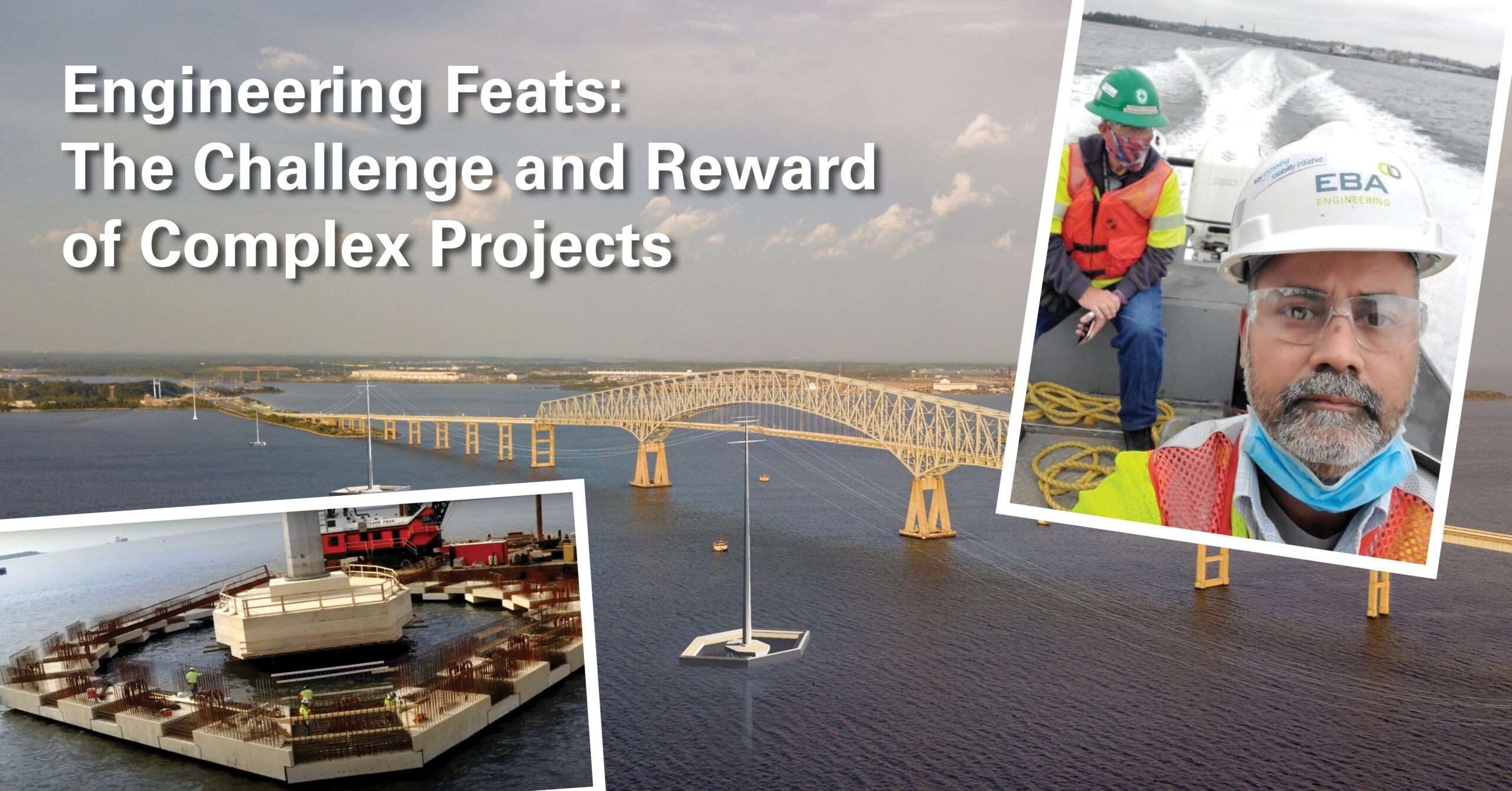Engineering Feats: The Challenge and Reward of Complex Projects
 For engineering professionals, every project presents a new set of challenges that must be turned into solutions. The opportunity to help our clients solve their unique problems, achieve their goals, and improve their infrastructure and communities is often what draws STEM professionals to the field.
For engineering professionals, every project presents a new set of challenges that must be turned into solutions. The opportunity to help our clients solve their unique problems, achieve their goals, and improve their infrastructure and communities is often what draws STEM professionals to the field.
For EBA’s materials and laboratory testing team, working on the Key Crossing Reliability Initiative is one of those memorable opportunities—a complex challenge that will make a lasting impact in Baltimore and surrounding areas.
Baltimore Gas and Electric Company (BGE) owns and operates electric transmission lines that are part of the regional transmission system that transports electricity throughout the greater Baltimore metro area.
A segment of BGE’s transmission system that crosses under the Patapsco River next to the Francis Scott Key Bridge was nearing the end of its useful life. BGE undertook an ambitious transmission line project—the Key Crossing Reliability Initiative—to replace two high voltage transmission circuits that extend beneath the Patapsco River from Hawkins Point in Baltimore City to Sollers Point in Baltimore County.
BGE decided to construct an overhead transmission line (rather than submarine cables) to reduce environmental impacts, save costs, limit impacts to port operations, and support other economic considerations.
New overhead lines replaced the Key Crossing underground segment and connected with the existing overhead system. In total, BGE constructed eight transmission towers, five of which were erected in the Patapsco River.
As you can imagine, construction work in the middle of a waterbody was extremely complex. The Patapsco River is approximately 2 miles wide where the overhead lines were placed, with the Baltimore shipping channel running through the middle of the project area.
Just a few of our team’s challenges included:
- Access to the project site. Technicians were transported by boat to the towers in the river to test the concrete as it was poured.
- Many large concrete pours. Many pours were for 200–300 cubic yards. Testing was completed for temperature, slump, and air entrainment percentage for every 20 cubic yards delivered. A set of 8 cylinders were cast every 50 cubic yards.
- Early mornings. Because so much concrete had to be poured each day, our technicians were often on site and ready to test at 5:00 a.m.
- Unique testing procedures. During the winter months, the project team requested that we cure the cylinders in the river to see how the colder water was affecting the concrete. The cylinders were placed in 5-gallon buckets, tied to the wharf, and submerged for the field cure. In addition to the standard concrete strength testing, EBA’s laboratory conducted Chemical Procedure #C-20.0 to determine the nitrite levels in the hardened concrete.
- Safety. Keeping all employees safe on the water was a top priority. Technicians completed a safety training class, including water safety, before the project began.
In all, the transmission improvements will lead to fewer outages, improved system reliability, and faster restoration when outages do occur. Knowing we played a role in making our communities safer and more resilient when working on projects like this is the best part of our jobs!
Candace Rios is a senior project manager for EBA Engineering, Inc. She can be reached at 410.504.6126, candace.rios@ebaeningeering.com, or on LinkedIn.
